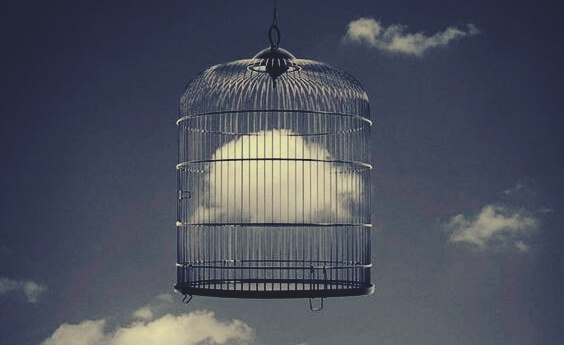The Positive Purpose Of Sadness


Written and verified by the psychologist Valeria Sabater
It happens to me a lot – I’m sad without really knowing why. There are days like that, when sadness embraces you and traps you. When there is an inexplicable feeling of anger inside you. An anger which combines with apathy and discouragement and tarnishes my day and the goals I’ve set for myself.
This feeling may be familiar to you. Moreover, most of us would give anything to make those gray days never appear on our horizon again. How we would love to remove sadness forever from our lives. Just as we would take a brush to rid our houses of that annoying dust.
“At that moment I began to experience a terrible sadness, but at the same time, I felt something like a tingling in the soul.”
-Fiodor Dostoievski-
Positive and negative emotions
If that’s the way you feel then it’s because we have been taught since childhood that there are positive and negative emotions. We are told that the latter – anger, rage or sadness, for example – should be hidden or avoided. Or, worse still, absorbed in some sort of unhealthy pedagogical practice. A custom that only serves to make us ill. And with the promise that if we just pretend that everything is fine then we’ll look good to everyone around us.
However, things are certainly not fine. If there are days when I am sad and angry there must be a reason why. All emotions have a purpose. Those biological components which are orchestrated chemically by our brain have a very clear function. To help us to adapt and survive in whatever scenarios we are faced with on a daily basis.
Sadness, for example, warns us that something is wrong and that we should stop, slow down and analyse the situation in order to make decisions. Hence there is no such thing as a negative emotion. All of them fulfill a purpose that we must discover and take on board. Let’s delve further into this topic…

I’m sad and angry, what’s wrong with me?
Most psychologists find that their patients are genuinely surprised to be diagnosed with depression. They are often convinced that what they have had for the last few months was a simple case of sadness.
On the other hand, there are those who go to a therapist or to their doctor asking for a treatment for depression, when in reality what they are experiencing is a clear intolerance to accepting emotions such as sadness, anger or frustration. These occurrences undoubtedly pose a real problem, and this reminds us of the importance of instruction in the area of our emotions.
Something that we cannot ignore is that some people simply cannot tolerate sadness. And yet this emotion is actually necessary for our own personal development and for our capacity for daily improvement. It isn’t usually well accepted or understood though. What we need, therefore, is to know the difference between sadness and depression, as well as the practical usefulness of sadness.
The characteristics of sadness and its purpose
We’re going to begin by defining sadness. In the first place we need to realize that it is a normal emotion, and we must tolerate it and delve into its causes. What’s more, a second point that should be remembered is that sadness, like anger, always has a trigger, a motive. Something that often doesn’t happen in depression.
- Sadness is also a very active, lively, emotion. This may surprise us but the goal of sadness is actually to help us feel strong, alive and courageous in the face of life’s adversities. It forces us to stop and focus, and so it is common to feel more tired, slower, and less receptive to everything around us.
- Sadness, in the same way as anger, insists that we separate ourselves for a moment from the outside world and look inside ourselves to get to know what is happening, and what is bothering, hurting and angering us.
Therefore, if I am sad, my obligation is to stop, spend time, listen to myself, heal myself and untangle the mess in my mind in order to know what has caused me to feel this way

What if what I’ve got is actually depression?
We cannot rule out that what we have may actually be depression. To find out if it is we need to know the symptoms and characteristics of this psychological abyss. For this reason, before playing the guessing game when we feel this way, it never hurts to go to a professional.
However, let’s take into account some basic characteristics that will help us differentiate it from simple sadness.
- While sadness is a normal and functional emotion, depression is completely dysfunctional and impacts all areas of our lives.
- It isn’t always necessary for something to have “happened” for us to develop a depression. Most of the time there are no triggers. In fact, there are patients with a seemingly perfect life, and despite this, they cannot help feeling desperately depressed.
- The sensation of exhaustion, discomfort and negativity is constant, almost chronic.
- Life stops holding any interest for you, you don’t experience pleasure in anything.
- Sleep problems appear – insomnia or hypersomnia.
- Negative thoughts are constant, however, there is also the feeling of guilt.
- Thoughts of suicide can occur.

Every time we face a new day with the feeling that we’re sad and we don’t know why, then we have a clear responsibility towards ourselves. We need to dedicate time and attention to ourselves, and understand that all emotions have a purpose. If we can’t find that purpose, if what we experience is helplessness and a fear of responsibility, then we will need to ask for specialist help to try and eradicate this dangerous darkness from our lives.
All cited sources were thoroughly reviewed by our team to ensure their quality, reliability, currency, and validity. The bibliography of this article was considered reliable and of academic or scientific accuracy.
- Berrocal, P. F., & Díaz, N. R. (2016). Desarrolla tu inteligencia emocional. Editorial Kairós.
- Greenberg, L. (2000). Emociones: una guía interna. Ed. Descleé de Brouwer.
- Steiner, G. (2007). Diez (posibles) razones para la tristeza del pensamiento (Vol. 38). Siruela.
This text is provided for informational purposes only and does not replace consultation with a professional. If in doubt, consult your specialist.








